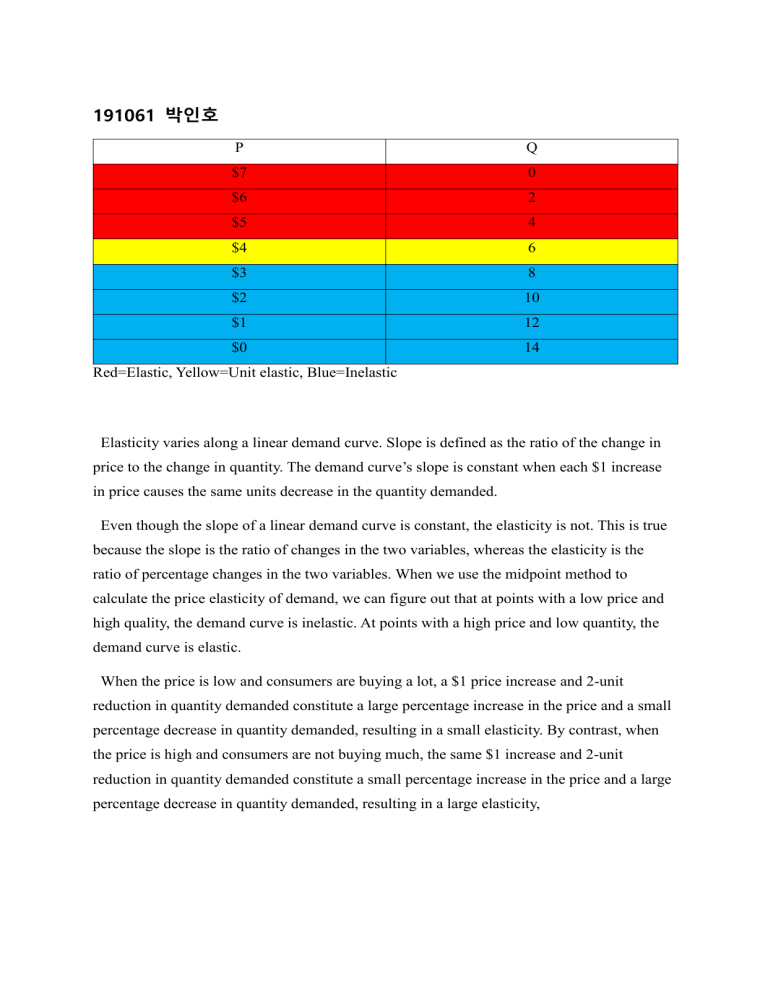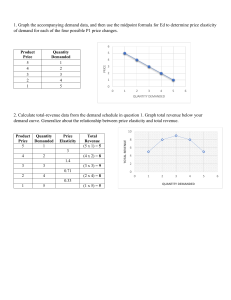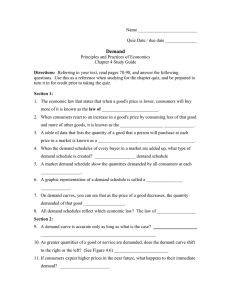
191061 박인호 P Q $7 0 $6 2 $5 4 $4 6 $3 8 $2 10 $1 12 $0 14 Red=Elastic, Yellow=Unit elastic, Blue=Inelastic Elasticity varies along a linear demand curve. Slope is defined as the ratio of the change in price to the change in quantity. The demand curve’s slope is constant when each $1 increase in price causes the same units decrease in the quantity demanded. Even though the slope of a linear demand curve is constant, the elasticity is not. This is true because the slope is the ratio of changes in the two variables, whereas the elasticity is the ratio of percentage changes in the two variables. When we use the midpoint method to calculate the price elasticity of demand, we can figure out that at points with a low price and high quality, the demand curve is inelastic. At points with a high price and low quantity, the demand curve is elastic. When the price is low and consumers are buying a lot, a $1 price increase and 2-unit reduction in quantity demanded constitute a large percentage increase in the price and a small percentage decrease in quantity demanded, resulting in a small elasticity. By contrast, when the price is high and consumers are not buying much, the same $1 increase and 2-unit reduction in quantity demanded constitute a small percentage increase in the price and a large percentage decrease in quantity demanded, resulting in a large elasticity,








